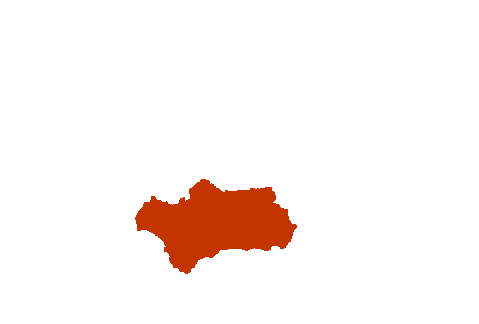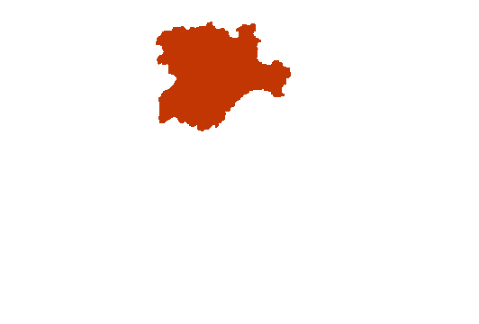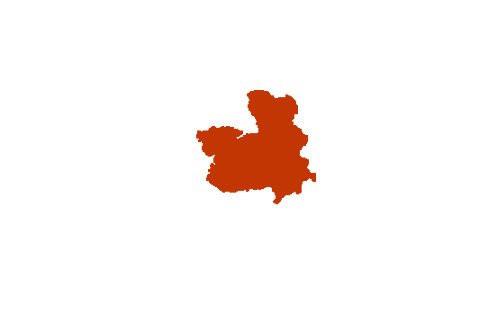Social security benefits and pensions
Content
The Spanish social security system
Through social security contributions, the State guarantees due protection in the circumstances and situations defined by law to persons who are eligible, by virtue of carrying out an occupational activity, and the family members or dependants in their care.
In the case of contributory benefits, the social security system covers Spanish nationals resident in Spain and foreign nationals resident or living legally in Spain, regardless of their gender, civil status or occupation, as long as, in both cases, they work within national territory.
The Spanish social security system includes the following categories:
- General category
- Special category for the self-employed
- Special category for offshore workers
- Special category for the coal mining sector
Contributory pensions under the social security system
In the context of social security, financial benefits, largely contributory, constitute a monetary entitlement which, once granted when certain conditions are met, is awarded to the beneficiary under the protected situations or contingencies provided for by law.
Different types of pension:
- Retirement: this benefit covers the loss of income that occurs when, on reaching the established retirement age, persons cease to work as an employee or as self-employed, by ending their working life, or they reduce their working hours and wages according to the terms established by law.
- Permanent disability: this benefit covers the loss of salary or professional income when persons are affected by a condition or trauma following an illness or accident, and suffer a reduction or loss of their capacity to work, presumed to be definitive.
- Survivor’s: these benefits are intended to compensate for the situation of financial hardship caused to somebody by the death of another.
Retirement pension
-
What types of retirement are there?
Workers covered by the social security system will, upon reaching pensionable age, be entitled to receive the corresponding retirement pension as long as they meet the requirements established in each case. There are various types of retirement pension:
- Ordinary retirement
 : when a worker stops work completely owing to their age, and meets the general requirements to qualify for a pension.
: when a worker stops work completely owing to their age, and meets the general requirements to qualify for a pension.
- Early retirement
 : the statutory retirement age may be lowered if certain requirements are met. There are two types of early retirement.
: the statutory retirement age may be lowered if certain requirements are met. There are two types of early retirement.
- Flexible retirement
 : upon qualifying for a retirement pension, a person can combine their pension with part-time work, the pension being reduced accordingly, as long as the requirements are met.
: upon qualifying for a retirement pension, a person can combine their pension with part-time work, the pension being reduced accordingly, as long as the requirements are met.
- Partial retirement
 : can be taken from the age of 61, must be combined with a part-time employment contract and, until the statutory retirement age is reached, must be linked to a hand-over contract signed with an unemployed worker or a fixed-term contract must have been previously agreed with the company.
: can be taken from the age of 61, must be combined with a part-time employment contract and, until the statutory retirement age is reached, must be linked to a hand-over contract signed with an unemployed worker or a fixed-term contract must have been previously agreed with the company.
-
What requirements must I meet?
The requirements vary depending on the type of retirement:
- Ordinary retirement
 : in general, you can apply for this pension if you are registered under any social security category and you meet the age and contribution requirements. It is worth knowing that the retirement ages, which vary according to the contribution period, will be applied gradually over the next few years, according to a scale.
: in general, you can apply for this pension if you are registered under any social security category and you meet the age and contribution requirements. It is worth knowing that the retirement ages, which vary according to the contribution period, will be applied gradually over the next few years, according to a scale.
- Age: you can apply for this pension if you have reached the statutory age
 , with some exceptions. Currently, the minimum age for applying for this pension is 65, if you can prove you have paid at least 37 years and 6 months of contributions, or 65 years and 10 months if you fall below this contribution threshold. Workers who apply for this pension without being registered must meet the same requirements.
, with some exceptions. Currently, the minimum age for applying for this pension is 65, if you can prove you have paid at least 37 years and 6 months of contributions, or 65 years and 10 months if you fall below this contribution threshold. Workers who apply for this pension without being registered must meet the same requirements.
- Minimum contribution period
 : 15 years, of which at least two must fall within the 15 years immediately preceding the start of your entitlement.
: 15 years, of which at least two must fall within the 15 years immediately preceding the start of your entitlement.
- Early retirement
 : the requirements vary depending on the type of early retirement.
: the requirements vary depending on the type of early retirement.
- Flexible retirement
 : to be eligible for this type of retirement you must meet the same requirements (age and contributions) as for ordinary retirement and prove that you are going to work part time, with a reduction in your working day of between 25% and 50%. Even though you are combining your pension with part-time work, you will still be a ‘pensioner’, which means you will have the same healthcare entitlement as an ordinary pensioner.
: to be eligible for this type of retirement you must meet the same requirements (age and contributions) as for ordinary retirement and prove that you are going to work part time, with a reduction in your working day of between 25% and 50%. Even though you are combining your pension with part-time work, you will still be a ‘pensioner’, which means you will have the same healthcare entitlement as an ordinary pensioner.
- Partial retirement
 : you can take partial retirement if you have reached the legal retirement age, reduce your working day by between 25% and 50% and meet the rest of the conditions required for ordinary retirement.
: you can take partial retirement if you have reached the legal retirement age, reduce your working day by between 25% and 50% and meet the rest of the conditions required for ordinary retirement.
You can also take partial retirement before the legal retirement age (with a minimum age that varies from case to case) if, in addition, you have a minimum of 6 years’ service in the company, have been paying contributions for 33 years and a hand-over contract is signed.
-
What am I entitled to?
- Ordinary retirement
 : 50% of the calculation basis, for 15 years of contributions. The percentage increases progressively up to 100% corresponding to a contribution period of 35 years and 6 months. The pension is paid in 14 monthly instalments and is a pension for life.
: 50% of the calculation basis, for 15 years of contributions. The percentage increases progressively up to 100% corresponding to a contribution period of 35 years and 6 months. The pension is paid in 14 monthly instalments and is a pension for life.
- Early retirement
 : if the retirement age is brought forward owing to the person’s job or to disability, the amount of the pension may be up to the same amount as for ordinary retirement. If the retirement age is brought forward for other reasons, the amount will be reduced depending on certain requirements.
: if the retirement age is brought forward owing to the person’s job or to disability, the amount of the pension may be up to the same amount as for ordinary retirement. If the retirement age is brought forward for other reasons, the amount will be reduced depending on certain requirements.
- Flexible retirement
 : the amount is calculated based on the ordinary retirement already received by the pensioner and is reduced in proportion to the working day. The new amount of your pension is applied from the day you start part-time work. The original amount will be re-established when your part-time contract ends.
: the amount is calculated based on the ordinary retirement already received by the pensioner and is reduced in proportion to the working day. The new amount of your pension is applied from the day you start part-time work. The original amount will be re-established when your part-time contract ends.
- Partial retirement
 : The amount of this type of pension is arrived at by applying the percentage reduction of the working day to the amount of the corresponding pension, according to the number of years of contributions. Reduction factors are not applied for being younger than the legal age.
: The amount of this type of pension is arrived at by applying the percentage reduction of the working day to the amount of the corresponding pension, according to the number of years of contributions. Reduction factors are not applied for being younger than the legal age.
There are guaranteed minimum pension payments and the pension is adjusted annually.
and the pension is adjusted annually.
-
How do I apply?
The procedure for being granted a survivor’s pension is initiated at the request of the person concerned. Applications are available at the following link. Applications can be made through any social security information and assistance centre, any official register
Applications can be made through any social security information and assistance centre, any official register or, if you have a digital certificate, through the Social Security portal under Benefits, clicking on Retirement
or, if you have a digital certificate, through the Social Security portal under Benefits, clicking on Retirement .
.
What types of retirement are there?
Workers covered by the social security system will, upon reaching pensionable age, be entitled to receive the corresponding retirement pension as long as they meet the requirements established in each case. There are various types of retirement pension:
- Ordinary retirement
 : when a worker stops work completely owing to their age, and meets the general requirements to qualify for a pension.
: when a worker stops work completely owing to their age, and meets the general requirements to qualify for a pension. - Early retirement
 : the statutory retirement age may be lowered if certain requirements are met. There are two types of early retirement.
: the statutory retirement age may be lowered if certain requirements are met. There are two types of early retirement. - Flexible retirement
 : upon qualifying for a retirement pension, a person can combine their pension with part-time work, the pension being reduced accordingly, as long as the requirements are met.
: upon qualifying for a retirement pension, a person can combine their pension with part-time work, the pension being reduced accordingly, as long as the requirements are met. - Partial retirement
 : can be taken from the age of 61, must be combined with a part-time employment contract and, until the statutory retirement age is reached, must be linked to a hand-over contract signed with an unemployed worker or a fixed-term contract must have been previously agreed with the company.
: can be taken from the age of 61, must be combined with a part-time employment contract and, until the statutory retirement age is reached, must be linked to a hand-over contract signed with an unemployed worker or a fixed-term contract must have been previously agreed with the company.
What requirements must I meet?
The requirements vary depending on the type of retirement:
- Ordinary retirement
 : in general, you can apply for this pension if you are registered under any social security category and you meet the age and contribution requirements. It is worth knowing that the retirement ages, which vary according to the contribution period, will be applied gradually over the next few years, according to a scale.
: in general, you can apply for this pension if you are registered under any social security category and you meet the age and contribution requirements. It is worth knowing that the retirement ages, which vary according to the contribution period, will be applied gradually over the next few years, according to a scale.
- Age: you can apply for this pension if you have reached the statutory age
 , with some exceptions. Currently, the minimum age for applying for this pension is 65, if you can prove you have paid at least 37 years and 6 months of contributions, or 65 years and 10 months if you fall below this contribution threshold. Workers who apply for this pension without being registered must meet the same requirements.
, with some exceptions. Currently, the minimum age for applying for this pension is 65, if you can prove you have paid at least 37 years and 6 months of contributions, or 65 years and 10 months if you fall below this contribution threshold. Workers who apply for this pension without being registered must meet the same requirements. - Minimum contribution period
 : 15 years, of which at least two must fall within the 15 years immediately preceding the start of your entitlement.
: 15 years, of which at least two must fall within the 15 years immediately preceding the start of your entitlement.
- Age: you can apply for this pension if you have reached the statutory age
- Early retirement
 : the requirements vary depending on the type of early retirement.
: the requirements vary depending on the type of early retirement. - Flexible retirement
 : to be eligible for this type of retirement you must meet the same requirements (age and contributions) as for ordinary retirement and prove that you are going to work part time, with a reduction in your working day of between 25% and 50%. Even though you are combining your pension with part-time work, you will still be a ‘pensioner’, which means you will have the same healthcare entitlement as an ordinary pensioner.
: to be eligible for this type of retirement you must meet the same requirements (age and contributions) as for ordinary retirement and prove that you are going to work part time, with a reduction in your working day of between 25% and 50%. Even though you are combining your pension with part-time work, you will still be a ‘pensioner’, which means you will have the same healthcare entitlement as an ordinary pensioner. - Partial retirement
 : you can take partial retirement if you have reached the legal retirement age, reduce your working day by between 25% and 50% and meet the rest of the conditions required for ordinary retirement.
: you can take partial retirement if you have reached the legal retirement age, reduce your working day by between 25% and 50% and meet the rest of the conditions required for ordinary retirement.
You can also take partial retirement before the legal retirement age (with a minimum age that varies from case to case) if, in addition, you have a minimum of 6 years’ service in the company, have been paying contributions for 33 years and a hand-over contract is signed.
What am I entitled to?
- Ordinary retirement
 : 50% of the calculation basis, for 15 years of contributions. The percentage increases progressively up to 100% corresponding to a contribution period of 35 years and 6 months. The pension is paid in 14 monthly instalments and is a pension for life.
: 50% of the calculation basis, for 15 years of contributions. The percentage increases progressively up to 100% corresponding to a contribution period of 35 years and 6 months. The pension is paid in 14 monthly instalments and is a pension for life. - Early retirement
 : if the retirement age is brought forward owing to the person’s job or to disability, the amount of the pension may be up to the same amount as for ordinary retirement. If the retirement age is brought forward for other reasons, the amount will be reduced depending on certain requirements.
: if the retirement age is brought forward owing to the person’s job or to disability, the amount of the pension may be up to the same amount as for ordinary retirement. If the retirement age is brought forward for other reasons, the amount will be reduced depending on certain requirements. - Flexible retirement
 : the amount is calculated based on the ordinary retirement already received by the pensioner and is reduced in proportion to the working day. The new amount of your pension is applied from the day you start part-time work. The original amount will be re-established when your part-time contract ends.
: the amount is calculated based on the ordinary retirement already received by the pensioner and is reduced in proportion to the working day. The new amount of your pension is applied from the day you start part-time work. The original amount will be re-established when your part-time contract ends. - Partial retirement
 : The amount of this type of pension is arrived at by applying the percentage reduction of the working day to the amount of the corresponding pension, according to the number of years of contributions. Reduction factors are not applied for being younger than the legal age.
: The amount of this type of pension is arrived at by applying the percentage reduction of the working day to the amount of the corresponding pension, according to the number of years of contributions. Reduction factors are not applied for being younger than the legal age.
There are guaranteed minimum pension payments
 and the pension is adjusted annually.
and the pension is adjusted annually.
How do I apply?
The procedure for being granted a survivor’s pension is initiated at the request of the person concerned. Applications are available at the following link.![]() Applications can be made through any social security information and assistance centre, any official register
Applications can be made through any social security information and assistance centre, any official register![]() or, if you have a digital certificate, through the Social Security portal under Benefits, clicking on Retirement
or, if you have a digital certificate, through the Social Security portal under Benefits, clicking on Retirement![]() .
.
Permanent disability pension
-
What degrees of permanent disability are there?
As a worker, you can apply for permanent disability benefit if, upon completing the prescribed treatment, you still suffer serious physical or functional limitations that prevent you from working normally. Disability is classified according to the following degrees:
- Partial permanent disability
 : the worker’s normal performance is impaired, but they can carry out the basic tasks of their usual job.
: the worker’s normal performance is impaired, but they can carry out the basic tasks of their usual job.
- Total permanent disability
 : prevents the worker from carrying out the basic tasks of their usual occupation, but they are able to do a different job.
: prevents the worker from carrying out the basic tasks of their usual occupation, but they are able to do a different job.
- Absolute permanent disability
 : completely disqualifies the worker from any occupation.
: completely disqualifies the worker from any occupation.
- Severe disability
 : total or absolute permanent disability of the worker, who moreover requires assistance from another person to carry out their daily basic activities.
: total or absolute permanent disability of the worker, who moreover requires assistance from another person to carry out their daily basic activities.
-
What requirements must I meet?
The requirements vary depending on the degree of permanent disability.
- Partial permanent disability
 : if the cause of your disability was an ordinary illness, you must be registered in the social security system and have paid contributions for 1 800 days during the 10 years prior to the date when your temporary disability became a permanent disability.
: if the cause of your disability was an ordinary illness, you must be registered in the social security system and have paid contributions for 1 800 days during the 10 years prior to the date when your temporary disability became a permanent disability.
- Total permanent disability
 : if the cause of your disability was an ordinary illness, you must be registered in the social security system and have paid contributions for a set period, which varies depending on whether you are over or under 31 years of age.
: if the cause of your disability was an ordinary illness, you must be registered in the social security system and have paid contributions for a set period, which varies depending on whether you are over or under 31 years of age.
- Absolute permanent disability
 : if the cause of your disability was an ordinary illness or non-occupational accident, you are entitled to support if you are registered in the social security system and have paid contributions for a set period (which varies depending on age). If you are not registered in the social security system, you must have paid contributions for 15 years, of which three of those years must be during the last 10 years.
: if the cause of your disability was an ordinary illness or non-occupational accident, you are entitled to support if you are registered in the social security system and have paid contributions for a set period (which varies depending on age). If you are not registered in the social security system, you must have paid contributions for 15 years, of which three of those years must be during the last 10 years.
- Severe disability
 : the same requirements apply as for absolute permanent disability.
: the same requirements apply as for absolute permanent disability.
For all degrees of disability, if the pension is the result of an accident at work or an occupational illness, there is no required contribution period.
-
What am I entitled to?
Benefits vary depending on the degree of disability:
- Partial permanent disability
 : single payment consisting of 24 monthly instalments of the calculation basis
: single payment consisting of 24 monthly instalments of the calculation basis used to work out the benefit for the temporary disability which resulted in permanent disability.
used to work out the benefit for the temporary disability which resulted in permanent disability.
- Total permanent disability
 : 55% of the corresponding calculation basis
: 55% of the corresponding calculation basis . For people aged 55 or over who have difficulty in finding work, 75% of the corresponding calculation basis.
. For people aged 55 or over who have difficulty in finding work, 75% of the corresponding calculation basis.
- Absolute permanent disability
 : 100% of the calculation basis
: 100% of the calculation basis .
.
- Severe disability
 : a supplement to pay the disabled person’s carer: calculated by adding 45% of the minimum applicable contribution basis and 30% of the contribution basis of the last month, depending on the cause of disability.
: a supplement to pay the disabled person’s carer: calculated by adding 45% of the minimum applicable contribution basis and 30% of the contribution basis of the last month, depending on the cause of disability.
In cases where, having reached the statutory retirement age or over, persons are eligible for the pension for a total or absolute permanent disability resulting from common contingencies, since they do not qualify for a retirement pension, the current percentage applicable to the calculation basis is 50%.
There are guaranteed minimum pension payments and the pension is adjusted annually.
and the pension is adjusted annually.
-
How do I apply?
The procedure for being granted a permanent disability pension is initiated automatically or at the request of the person concerned. Applications are available at the following link . Applications can be made through any social security information and assistance centre, any official register
. Applications can be made through any social security information and assistance centre, any official register or, if you have a digital certificate, through the Social Security portal on benefits in relation to permanent disability
or, if you have a digital certificate, through the Social Security portal on benefits in relation to permanent disability .
.
What degrees of permanent disability are there?
As a worker, you can apply for permanent disability benefit if, upon completing the prescribed treatment, you still suffer serious physical or functional limitations that prevent you from working normally. Disability is classified according to the following degrees:
- Partial permanent disability
 : the worker’s normal performance is impaired, but they can carry out the basic tasks of their usual job.
: the worker’s normal performance is impaired, but they can carry out the basic tasks of their usual job. - Total permanent disability
 : prevents the worker from carrying out the basic tasks of their usual occupation, but they are able to do a different job.
: prevents the worker from carrying out the basic tasks of their usual occupation, but they are able to do a different job. - Absolute permanent disability
 : completely disqualifies the worker from any occupation.
: completely disqualifies the worker from any occupation. - Severe disability
 : total or absolute permanent disability of the worker, who moreover requires assistance from another person to carry out their daily basic activities.
: total or absolute permanent disability of the worker, who moreover requires assistance from another person to carry out their daily basic activities.
What requirements must I meet?
The requirements vary depending on the degree of permanent disability.
- Partial permanent disability
 : if the cause of your disability was an ordinary illness, you must be registered in the social security system and have paid contributions for 1 800 days during the 10 years prior to the date when your temporary disability became a permanent disability.
: if the cause of your disability was an ordinary illness, you must be registered in the social security system and have paid contributions for 1 800 days during the 10 years prior to the date when your temporary disability became a permanent disability. - Total permanent disability
 : if the cause of your disability was an ordinary illness, you must be registered in the social security system and have paid contributions for a set period, which varies depending on whether you are over or under 31 years of age.
: if the cause of your disability was an ordinary illness, you must be registered in the social security system and have paid contributions for a set period, which varies depending on whether you are over or under 31 years of age. - Absolute permanent disability
 : if the cause of your disability was an ordinary illness or non-occupational accident, you are entitled to support if you are registered in the social security system and have paid contributions for a set period (which varies depending on age). If you are not registered in the social security system, you must have paid contributions for 15 years, of which three of those years must be during the last 10 years.
: if the cause of your disability was an ordinary illness or non-occupational accident, you are entitled to support if you are registered in the social security system and have paid contributions for a set period (which varies depending on age). If you are not registered in the social security system, you must have paid contributions for 15 years, of which three of those years must be during the last 10 years. - Severe disability
 : the same requirements apply as for absolute permanent disability.
: the same requirements apply as for absolute permanent disability.
For all degrees of disability, if the pension is the result of an accident at work or an occupational illness, there is no required contribution period.
What am I entitled to?
Benefits vary depending on the degree of disability:
- Partial permanent disability
 : single payment consisting of 24 monthly instalments of the calculation basis
: single payment consisting of 24 monthly instalments of the calculation basis used to work out the benefit for the temporary disability which resulted in permanent disability.
used to work out the benefit for the temporary disability which resulted in permanent disability. - Total permanent disability
 : 55% of the corresponding calculation basis
: 55% of the corresponding calculation basis . For people aged 55 or over who have difficulty in finding work, 75% of the corresponding calculation basis.
. For people aged 55 or over who have difficulty in finding work, 75% of the corresponding calculation basis. - Absolute permanent disability
 : 100% of the calculation basis
: 100% of the calculation basis .
. - Severe disability
 : a supplement to pay the disabled person’s carer: calculated by adding 45% of the minimum applicable contribution basis and 30% of the contribution basis of the last month, depending on the cause of disability.
: a supplement to pay the disabled person’s carer: calculated by adding 45% of the minimum applicable contribution basis and 30% of the contribution basis of the last month, depending on the cause of disability.
In cases where, having reached the statutory retirement age or over, persons are eligible for the pension for a total or absolute permanent disability resulting from common contingencies, since they do not qualify for a retirement pension, the current percentage applicable to the calculation basis is 50%.
There are guaranteed minimum pension payments![]() and the pension is adjusted annually.
and the pension is adjusted annually.
How do I apply?
The procedure for being granted a permanent disability pension is initiated automatically or at the request of the person concerned. Applications are available at the following link![]() . Applications can be made through any social security information and assistance centre, any official register
. Applications can be made through any social security information and assistance centre, any official register![]() or, if you have a digital certificate, through the Social Security portal on benefits in relation to permanent disability
or, if you have a digital certificate, through the Social Security portal on benefits in relation to permanent disability![]() .
.
Survivor’s pensions
-
What types of survivor's pension are there?
For these benefits, a distinction must be made between the deceased, i.e. the person whose death has triggered the benefit, and the beneficiaries who are entitled to receive these pensions if they meet the requirements in each case.
There are three types of survivor's pension: widowhood, orphan and family.
-
What requirements must I meet?
The requirements vary depending on the type of pension:
- Widowhood pension
 : the deceased’s spouse or common-law partner (as long as they meet certain requirements in this case) can apply for a widowhood pension. Moreover, it is possible to apply for a widowhood pension if you were separated or divorced or if your marriage was annulled, provided that you meet certain conditions.
: the deceased’s spouse or common-law partner (as long as they meet certain requirements in this case) can apply for a widowhood pension. Moreover, it is possible to apply for a widowhood pension if you were separated or divorced or if your marriage was annulled, provided that you meet certain conditions.
- Orphan’s pension
 : as a child of the deceased, you are entitled to an orphan’s pension if you are under 21 years of age (or over 21 but have an absolute permanent disability or severe disability) or under 25 years of age if you do not work or if your income does not exceed the minimum wage.
: as a child of the deceased, you are entitled to an orphan’s pension if you are under 21 years of age (or over 21 but have an absolute permanent disability or severe disability) or under 25 years of age if you do not work or if your income does not exceed the minimum wage.
- Family pension
 : this can be paid to certain family members who were living with and financially dependent on the deceased (usually parents, grandparents, grandchildren or siblings of the deceased).
: this can be paid to certain family members who were living with and financially dependent on the deceased (usually parents, grandparents, grandchildren or siblings of the deceased).
To read about other types of benefits due to the death of a person, see the next page .
.
-
What am I entitled to?
In all cases, two variables will be used to calculate the pension:
- Calculation basis: This is calculated differently depending on the situation of the deceased (working or retired) and the cause of death (ordinary illness, occupational illness or occupational accident).
- Percentage: varies according to type of pension:
- Widowhood: generally 52%, although this can vary in some particular circumstances
 .
.
- Orphan’s pension: generally, the maximum percentage per orphan is 20%, although this can vary in some particular circumstances
 .
.
- Family pension: the percentage will be 20% with the maximum limit established (where there is more than one beneficiary, the sum of the benefits due to death and survival cannot exceed 100% of the corresponding calculation basis). For more information, click on this link
 .
.
There are guaranteed minimum pension payments and the pension is adjusted annually.
and the pension is adjusted annually.
-
How do I apply?
The procedure for being granted a survivor’s pension is initiated at the request of the person concerned. Applications are available at the following link . Applications can be made through any social security information and assistance centre, any official register
. Applications can be made through any social security information and assistance centre, any official register or, if you have a digital certificate, through the Social Security portal on Bnefits in relation to death, widowhood and orphanhood.
or, if you have a digital certificate, through the Social Security portal on Bnefits in relation to death, widowhood and orphanhood.
What types of survivor's pension are there?
For these benefits, a distinction must be made between the deceased, i.e. the person whose death has triggered the benefit, and the beneficiaries who are entitled to receive these pensions if they meet the requirements in each case.
There are three types of survivor's pension: widowhood, orphan and family.
What requirements must I meet?
The requirements vary depending on the type of pension:
- Widowhood pension
 : the deceased’s spouse or common-law partner (as long as they meet certain requirements in this case) can apply for a widowhood pension. Moreover, it is possible to apply for a widowhood pension if you were separated or divorced or if your marriage was annulled, provided that you meet certain conditions.
: the deceased’s spouse or common-law partner (as long as they meet certain requirements in this case) can apply for a widowhood pension. Moreover, it is possible to apply for a widowhood pension if you were separated or divorced or if your marriage was annulled, provided that you meet certain conditions. - Orphan’s pension
 : as a child of the deceased, you are entitled to an orphan’s pension if you are under 21 years of age (or over 21 but have an absolute permanent disability or severe disability) or under 25 years of age if you do not work or if your income does not exceed the minimum wage.
: as a child of the deceased, you are entitled to an orphan’s pension if you are under 21 years of age (or over 21 but have an absolute permanent disability or severe disability) or under 25 years of age if you do not work or if your income does not exceed the minimum wage. - Family pension
 : this can be paid to certain family members who were living with and financially dependent on the deceased (usually parents, grandparents, grandchildren or siblings of the deceased).
: this can be paid to certain family members who were living with and financially dependent on the deceased (usually parents, grandparents, grandchildren or siblings of the deceased).
To read about other types of benefits due to the death of a person, see the next page![]() .
.
What am I entitled to?
In all cases, two variables will be used to calculate the pension:
- Calculation basis: This is calculated differently depending on the situation of the deceased (working or retired) and the cause of death (ordinary illness, occupational illness or occupational accident).
- Percentage: varies according to type of pension:
- Widowhood: generally 52%, although this can vary in some particular circumstances
 .
. - Orphan’s pension: generally, the maximum percentage per orphan is 20%, although this can vary in some particular circumstances
 .
. - Family pension: the percentage will be 20% with the maximum limit established (where there is more than one beneficiary, the sum of the benefits due to death and survival cannot exceed 100% of the corresponding calculation basis). For more information, click on this link
 .
.
- Widowhood: generally 52%, although this can vary in some particular circumstances
There are guaranteed minimum pension payments![]() and the pension is adjusted annually.
and the pension is adjusted annually.
How do I apply?
The procedure for being granted a survivor’s pension is initiated at the request of the person concerned. Applications are available at the following link![]() . Applications can be made through any social security information and assistance centre, any official register
. Applications can be made through any social security information and assistance centre, any official register![]() or, if you have a digital certificate, through the Social Security portal on Bnefits in relation to death, widowhood and orphanhood.
or, if you have a digital certificate, through the Social Security portal on Bnefits in relation to death, widowhood and orphanhood.![]()
Information for each Autonomous Community












Andalucía Aragón Asturias, Principado de Balears, Illes Canarias Cantabria Castilla y León Castilla-La Mancha Cataluña Ciudad de Ceuta Ciudad de Melilla Comunitat Valenciana Extremadura Galicia Madrid, Comunidad de Murcia, Región de Navarra, Comunidad Foral de País Vasco Rioja, La










